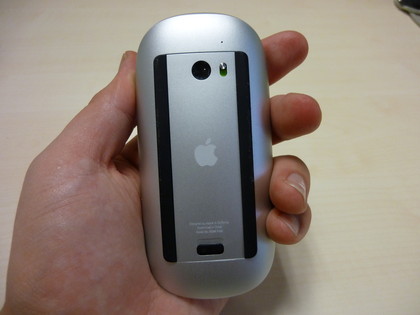As Bing finally brings ChaptGPT to iPhone, here's 3 more lessons Microsoft can teach Apple
Never enough bot action

Out of all the burgeoning tech companies diving into the AI pool, no one has pushed for widespread integrations harder and faster than Microsoft. The latest integrations include access to the AI-powered chatbot via the company’s SwiftKey keyboard app, now available on iOS.
Within the Swiftkey app, the bot has three functions: Search, Chat and Tone. The first two are pretty easy to understand, you can search the web from the Swiftkey app and chat with Bing if you have questions (or a slow day in the office), but the third function is pretty cool. It makes Bing your editor and lets the bot reword your copy to fit a desired tone.
In the official blog post from Microsoft, the team details the numerous ways Tone can be used on a day-to-day basis: “whether you struggle to be formal in your work emails or you’re learning a new language and want help with nuances of word choice”, Tone will have your back. You can make your words sounds more professional, casual, or polite.
The capabilities are pretty creative from Microsoft’s examples, as they say, you can use the search functionality to help you suggest new restaurants to friends in real-time, look stuff up mid-conversation - just to double-check you’re right, of course - or check the weather when you’re making plans.
The features are available wherever the new Bing is available, and while everyone can use the Search function now, Tone and Chat functions require you sign into a Microsoft Account that has access to the new Bing.
3 things Apple could learn from Microsoft
It’s not entirely surprising to see Apple beaten to the punch when it comes to AI, but it does make me wonder - what more could Apple learn from Microsoft? Tim Cook, if you’re reading this, here are my humble suggestions:
1. If it ain’t broke, don’t fix it

Microsoft File Explorer has barely changed for decades, and that’s because Microsoft basically nailed it way back and stuck with something that works. When I look back to my IT lessons from way back when up until I finished high school the one solid constant was always being able to navigate File Explorer. Whatever update or new version of Windows came my way there was always the security that one thing would always be familiar and easy to use, and having little to no changes to the easy-to-navigate File Explorer.
Even when I got my first macOS device and booted it up for the first time, I found myself immediately looking for the file manager and trying to ground myself off my Microsoft experience. I think this is something Apple can pick up from, as Apple is often too keen to innovate visually and technically in areas that just don't need changing. I know Apple has built itself on the basis of constant innovation, but sometimes constants are blessings.
2. Microsoft’s peripheral design is simply more sensible

I’m sure you know where I am going with this off the heading alone: that Magic Mouse!
Get daily insight, inspiration and deals in your inbox
Sign up for breaking news, reviews, opinion, top tech deals, and more.
Apple’s aesthetic has been carefully crafted and fine-tuned across the years, giving it all a signature ‘look’. But sometimes they sacrifice practicality for the design ethos and that can lead to a wireless mouse that has a charging port on the bottom. So, sucks to be you if your mouse dies right when you need it.
Don’t get me wrong, the Magic Keyboard is excellent - and has a very endearing name - but Apple doesn’t seem to consider the wide breadth of people that will be using their products. You could argue that Microsoft has some pretty boring peripherals, but they’re functional and you can tell they prioritise functionality over everything else which is greatly appreciated.
Microsoft towers over Apple in the realm of accessible technology as well, and this is
def think Apple could learn from Microsoft's peripherals. Their Adaptive Accessories are built around different users' needs to allow everyone the opportunity to interact with technology in a way that doesn’t exclude but rather adapts to them, which is something Apple has definitely fallen short of. The accessories don’t break the bank either, which is again a lesson Apple could learn from.
3. Stop sitting around when it comes to new stuff
There is no need to be fashionably late to everything - see AI. It is easy to argue that Apple is simply ‘watching and waiting’ while other companies like Microsoft and Google plough onwards. And if they do adopt AI that’s probably their current strategy, so Apple can come out with a refined version, that does feel a little lazy.
Your stance on AI aside you have to admit they’re going to be late to the game and have to compete with developing chatbots that a lot of people have invested a lot of time into.
People have ridden the highs and lows of Microsoft’s Bing AI and it hasn’t even been out in the public for that long, but that kind of investment can’t be topped. People know how to use ChatGPT and Bing - and slowly, Bard - and have projects, small businesses or a backlog of chats with them that Apple can’t compete with.

Muskaan is TechRadar’s UK-based Computing writer. She has always been a passionate writer and has had her creative work published in several literary journals and magazines. Her debut into the writing world was a poem published in The Times of Zambia, on the subject of sunflowers and the insignificance of human existence in comparison. Growing up in Zambia, Muskaan was fascinated with technology, especially computers, and she's joined TechRadar to write about the latest GPUs, laptops and recently anything AI related. If you've got questions, moral concerns or just an interest in anything ChatGPT or general AI, you're in the right place. Muskaan also somehow managed to install a game on her work MacBook's Touch Bar, without the IT department finding out (yet).